The document discusses insider threat programs and insider threats. It notes that in the last fiscal year, economic espionage and theft of trade secrets cost the American economy over $19 billion, and these crimes are increasingly linked to insider threats. The average cost per insider threat incident is $412,000, with average losses of $15 million per industry per year. Some incidents have exceeded $1 billion in losses. Intellectual property now represents most of a corporation's value, making assets more susceptible to espionage. The document discusses the need for organizations to implement insider threat programs to identify, prevent, detect and respond to insider threats in order to reduce losses.
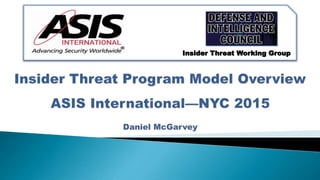

















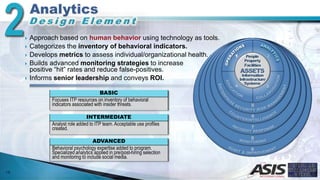
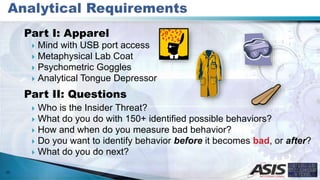



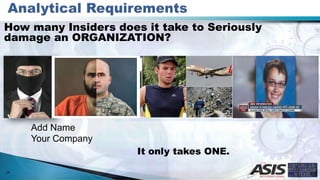




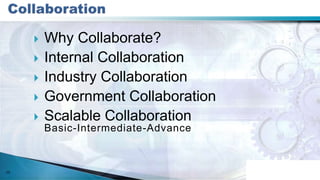


![37
US Businesses [DOMESTIC]
◦ NCIX/NCSC reporting
◦ FBI Field Office
US Businesses [INTERNATIONAL]
◦ U.S. Embassy (Commercial Services,
Legal Attaché)
◦ AMCHAM
Law Enforcement (Local, State and Federal)
Regulators/Law Makers
Government Contracting Activities and Security Offices
Defense Security Service (Industrial Security
Representatives and Counterintelligence Special Agents)](https://image.slidesharecdn.com/2862191f-150b-4c3b-a3a8-cc4f1cfe35d0-150427115346-conversion-gate02/85/ASIS-NYC-InT-Presentation-32-320.jpg)























